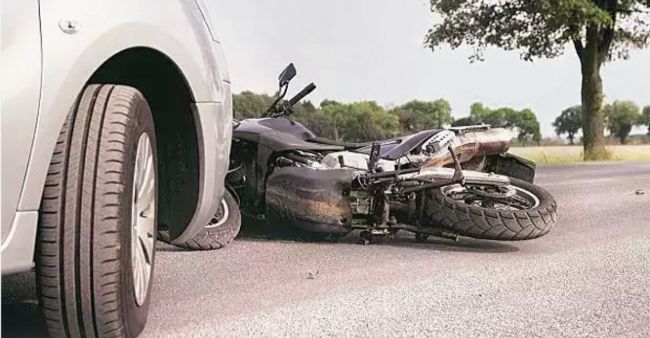Protests by transporters and auto drivers are erupting opposing the proposed tightening of Section 104 in recent legislative changes. Truck, bus and tanker drivers are on a three-day strike to protest against the stringent jail and fine regulations under the newly-launched Bharatiya Nyay Sanhita (BNS) for hit-and-run cases.
Each year, thousands fall victim to hit-and-run incidents, often losing their lives due to delayed medical attention. The proposed laws dictate that in hit-and-run cases, fleeing individuals arrested for leaving an injured person alone may face up to a 10-year imprisonment alongside fines. Conversely, drivers who promptly report accidents may receive reduced penalties.
A Report of ministry of road and highways says that approximatly 5,00,000 people got injured in road accident in 2023.
‘India witnessed a 9.4% increase in fatalities due to road accidents in 2022 with 1.68 lakh people losing their lives last year either due to reckless driving, over speeding, drunken driving and non-compliance of traffic regulations while the total number of accidents went up by 11.9% to 4.61 lakh’, the ministry of road transport and highways said in its report.
This translates into 19 deaths every hour and 53 accidents per hour. The report said the number of injured people was 15.3% higher compared to last year at 4.43 lakh.
As per the report, for the fourth consecutive year in 2022, the fatal road accident victims largely constitute young people in the productive age groups. “Young adults in the age group of 18 – 45 years accounted for 66.5% of victims during 2022,” the report said, adding that people in the working age group of 18 – 60 years share 83.4% of total road accident fatalities.
The Hit and Run Law, outlined in Section 104 of the Indian Judicial Code, defines the act as causing harm to an individual or property due to reckless driving followed by fleeing the scene. This law stipulates a 10-year prison sentence for causing a victim’s death due to a driver’s negligence.
There is widespread public outcry across the nation concerning the recent amendment to the hit and run law introduced by the central government. The amendment is facing staunch opposition nationwide, sparking protests, particularly among truck drivers in multiple states like Madhya Pradesh, Uttar Pradesh, Rajasthan, and Maharashtra.
Consequently, long queues are witnessed at petrol pumps, with Madhya Pradesh experiencing the most significant impact. Additionally, the All India Transport Congress plans to convene a meeting in Delhi to decide on potential strike actions, scheduled for Tuesday.
Let’s delve into what constitutes a hit and run, the specifics of the new rule, the previous regulation, the necessity for the amendment, the grounds of opposition, and the government’s stance on the controversy.
What is Hit and Run
Hit and run incidents involve road accidents wherein harm is caused to an individual or property due to reckless and negligent driving, followed by the perpetrator fleeing the scene. These cases often pose challenges in capturing and penalizing the culprits due to a lack of evidence and eyewitnesses.
The New Rule
The contentious rule sparking national uproar is part of three recent laws passed by the Parliament. Specifically, it revises Section 104 of the Indian Justice Code (BNS), replacing the IPC. This section delineates punitive measures for causing death due to negligence.
Section 104(1) addresses causing death recklessly or negligently, warranting imprisonment up to five years and a fine.
Section 104(2) pertains to causing death due to negligent driving, constituting culpable homicide, leading to imprisonment extendable up to ten years and imposing a fine.
Previous Hit and Run Law:
In India, hit and run incidents were not explicitly punishable under the Indian Penal Code (IPC). However, sections 279, 304A, and 338 were relevant:
Section 279 defines and penalizes reckless driving.
Section 304A addresses death caused by negligence, punishable by imprisonment up to two years or a fine.
Section 338 addresses grievous hurt due to rash or negligent acts, carrying imprisonment up to two years or a fine.
Additional Regulations
The Motor Vehicles Act 1988 also applies to hit and run cases, encompassing Sections 161, 134(A), and 134(B):
Section 161 provides
compensation: Rs 25,000 for death and Rs 12,500 for severe injury.
Section 134(A) mandates immediate medical aid by the driver.
Section 134(B) requires the driver to report the accident to the police promptly, failing which leads to penalties.
Rationale for the Amendment:
The primary challenge in hit and run cases is the absence of direct evidence, making it arduous for law enforcement to identify culprits. Witnesses are often reluctant to cooperate due to legal concerns.
What is the cause of the protest?
The implementation of new regulations has stirred apprehension among drivers, who fear the rules are directed against them. According to the updated rules, drivers might face public backlash if they attempt to aid the injured.
What is the government’s stance on the controversy?
Union Home Minister Amit Shah recently disclosed in Parliament that the government has introduced stringent penalties for individuals fleeing the scene after causing a road accident, leaving victims unattended. Additionally, the Home Minister mentioned a degree of leniency for those voluntarily reporting the incident to the police and assisting the injured to the hospital. However, there exists no such provision in the Indian Penal Code.







